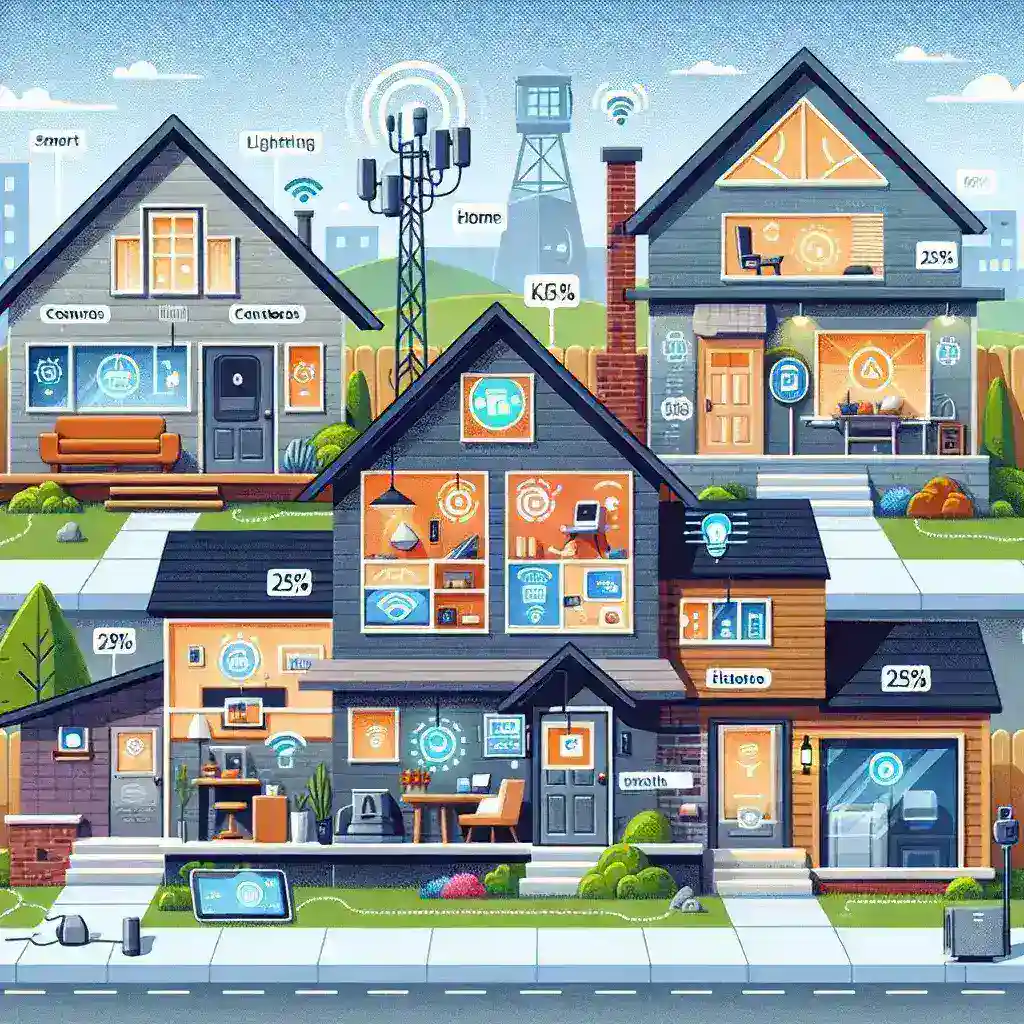Connected Home Technology Adoption Reaches 75% of American Households
The rise of connected home technology has been nothing short of revolutionary. With a staggering 75% of American households now embracing this smart technology, the landscape of home automation and IoT (Internet of Things) is rapidly changing. In this article, we will delve into the reasons behind this surge, the benefits and challenges it presents, and what the future holds for connected home technology in the United States.
Understanding Connected Home Technology
Connected home technology refers to a range of devices that communicate with each other and can be controlled remotely through the internet. These devices include smart thermostats, lighting systems, security cameras, voice assistants, and more. They are designed to enhance convenience, improve energy efficiency, and provide greater security and control over one’s home environment.
The Surge in Adoption
The adoption of connected home technology has accelerated significantly in recent years. According to recent surveys, 75% of American households now own at least one connected device. This growth can be attributed to several factors:
- Increased Awareness: As consumers become more aware of the advantages of smart technology, they are more willing to invest in these innovations.
- Affordability: The prices of smart home devices have come down significantly, making them accessible to a larger segment of the population.
- Ease of Use: Many devices are designed with user-friendly interfaces, making it easy for anyone to incorporate them into their homes.
- Integration: The ability to integrate various devices into a single ecosystem has made it more appealing for consumers.
Benefits of Connected Home Technology
The shift towards connected home technology offers multiple advantages:
- Convenience: Smart devices can be programmed to automate tasks, such as turning lights on and off or adjusting the thermostat, enhancing overall convenience.
- Energy Efficiency: Many connected devices provide energy-saving features, helping homeowners reduce their energy consumption and lower utility bills.
- Enhanced Security: Home security systems can be monitored remotely, allowing homeowners to keep an eye on their property even when they are away.
- Customization: Users can tailor their smart home environment to their personal preferences, adjusting settings to suit their lifestyles.
Challenges and Concerns
While the benefits are undeniable, there are also challenges and concerns that come with the adoption of connected home technology:
- Privacy Issues: As more devices collect data, concerns about privacy and data security have emerged.
- Reliability: Dependence on internet connectivity raises questions about the reliability of smart home systems, especially during outages.
- Compatibility: Not all devices are compatible with one another, which can complicate the integration process.
Historical Context of Smart Home Technology
The concept of smart homes is not new; it dates back to the early 20th century with the advent of basic automation systems. However, the modern iteration began to take shape in the early 2000s with the introduction of the Internet of Things. The rise of smartphones and wireless technologies has been instrumental in driving the growth of connected home technology.
Future Predictions for Connected Home Technology
Looking ahead, the future of connected home technology appears bright. Experts predict continued growth in adoption rates, with estimates suggesting that up to 90% of American households could have smart devices by 2030. Innovations in artificial intelligence and machine learning are expected to enhance the functionality of these devices, making homes smarter and more responsive.
Conclusion
The adoption of connected home technology has reached an impressive 75% of American households, showcasing a significant shift in consumer behavior and expectations. With numerous benefits, such as improved convenience and energy efficiency, it’s clear that the future holds even more potential for smart homes. As technology advances and becomes more integrated into our daily lives, the connected home will transform from a luxury into a standard feature of modern living.

